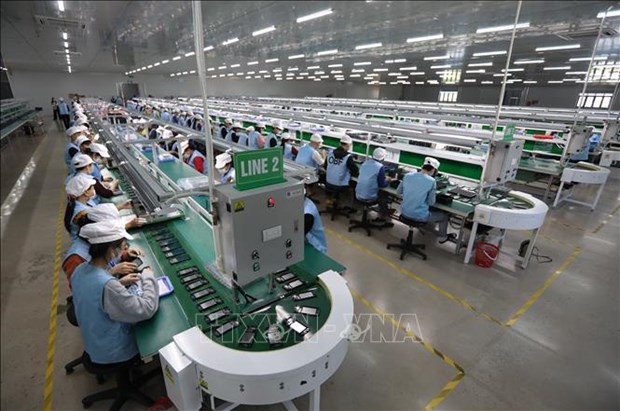Three factors keep Vietnam's economy humming along
Three factors keep Viet Nam’s economy humming along Infrastructure investment, trade environment and competitive wages are three factors that keep Viet Nam’s economy humming along and its growth numbers positive, according to an article published on the vietnam-briefing.com.
 |
| Illustrative image (Photo: VNA) |
Specifically, Vietnam spent around 6% of its GDP on infrastructure, which is among the highest in the ASEAN region.
Among that spending were some big ticket items such as the ambitious 1,800 km HCM City–Ha Noi highway; the Long Thanh International Airport, which will eventually replace HCM City’s overly congested Tan Son Nhat; metro projects in Ha Noi and HCM City; as well as thermal and waste-to-energy power plants.
Over the past few years, Viet Nam has been active in signing bilateral trade agreements with countries around the world. Its membership in the Association of Southeast Asian Nations (ASEAN) also makes it a party to several FTAs that the regional bloc has inked.
The standard of product quality, manufacturing, and employee rights guaranteed in these agreements will allow Viet Nam to become a manufacturing hub and expand its export base.
The EU-Viet Nam Free Trade Agreement (EVFTA), for example, has boosted Viet Nam’s exports despite the pandemic. In 2021, the UK-Vietnam FTA helped expand trade between Viet Nam and the UK to nearly 6.6 billion USD. Similar increases were also noted with the Comprehensive and Progressive Agreement for Trans-Pacific Partnership (CPTPP) with exports to Canada and Mexico.
Moreover, Viet Nam’s business environment is open, and the Government has provided investor-friendly policies aimed at attracting investment and socio-economic development. These are important pull factors for investors looking to invest in Viet Nam. This has been made easier through Viet Nam’s increasing number of FTAs.
One of Vietnam’s biggest advantages is its competitive wage. It has a young, dynamic workforce that is ready to fill the gap. Its young labor force also comes at a relatively lower cost. More than 40% of Vietnamese university graduates major in science and engineering. As Viet Nam sees its economy grow, its wages will rise. It will thus have to maintain a balance between inflation, wage levels, and productivity to avoid disrupting the overall labour market.
In conclusion, the article wrote that even while geopolitical tensions persist, Viet Nam’s economic prospects are promising. In the short term, costs are likely to increase, but investors that play the long game stand to reap big rewards.
Source: VNA